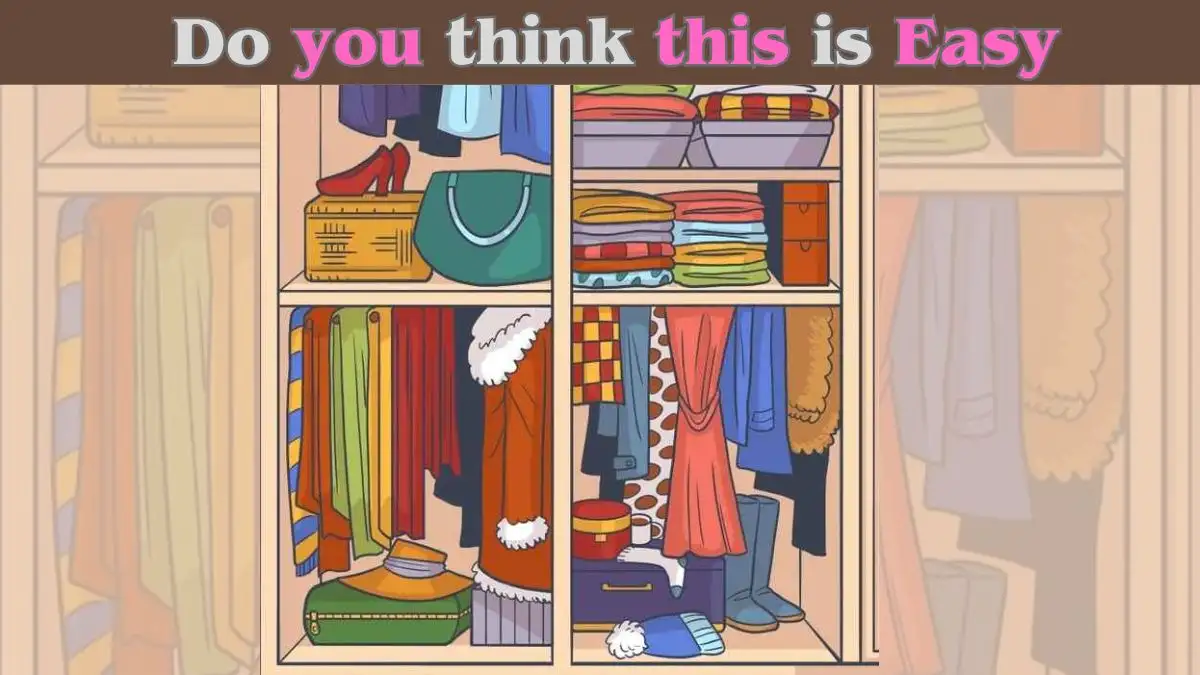Optical Illusion Eye Test: Only people with hawk eyes can spot the coffee cup in the wardrobe in 7 Secs
by Sangeetha
Updated Feb 24, 2024

Optical Illusion
Optical illusions captivate our senses by challenging the way our brains interpret visual information. These captivating phenomena exploit the intricate relationship between the eyes and the brain, revealing the fascinating complexities of human perception.
One classic example is the ambiguous figure known as the "impossible triangle," where three straight beams seem to form a continuous, three-dimensional shape that defies the rules of geometry. Another intriguing illusion is the Moiré pattern, created by overlapping repetitive patterns to generate an illusion of movement or depth.
Artists and psychologists alike have explored the potential of optical illusions to unlock the mysteries of cognition and inspire creativity. These perceptual puzzles often play tricks on our minds, emphasizing the subjectivity of our visual experiences.
Optical illusions remind us that reality is not always as it appears and that our perception is a delicate interplay between sensory input and cognitive processing, showcasing the marvels of the human mind in its quest to make sense of the visual world.
Optical Illusion Eye Test: Only people with hawk eyes can spot the coffee cup in the wardrobe in 7 Secs
In this optical illusion eye test, your visual perception is put to the ultimate challenge. The image presents a seemingly ordinary wardrobe, but hidden within its confines is a coffee cup waiting to be discovered. To successfully pass this test, one must possess hawk-like eyesight and keen attention to detail.
The deceptive nature of the illusion plays tricks on the mind, requiring individuals to quickly decipher the intricate details within the image. As you embark on this 7-second challenge, focus on each corner and edge of the wardrobe, letting your eyes explore every inch.
Only those with exceptional observational skills will triumph in spotting the concealed coffee cup, proving themselves as true masters of visual acuity.

Optical Illusion Eye Test: Only people with hawk eyes can spot the coffee cup in the wardrobe in 7 Secs - Solution
The Optical Illusion Eye Test presents a captivating challenge: spotting a hidden coffee cup within a wardrobe in just 7 seconds. To succeed, focus on the details and employ a methodical approach. Begin by examining the edges and corners of the wardrobe, paying close attention to any irregularities in the pattern or shadows.
The coffee cup may blend seamlessly with its surroundings, requiring a sharp eye to discern its subtle presence. Some find success by mentally breaking down the image into smaller sections, systematically scanning each part for the elusive cup.
With patience and a discerning gaze, those with hawk eyes will eventually triumph in uncovering the concealed coffee cup, proving their visual prowess in the realm of optical illusions.
This images is sourced from Bright Side

Optical Illusion Eye Test: Only people with hawk eyes can spot the coffee cup in the wardrobe in 7 Secs - FAQs
Optical illusions, more properly referred to as visual illusions, involve deception of the eye.
There are three main types of optical illusions including literal illusions, physiological illusions and cognitive illusions.





